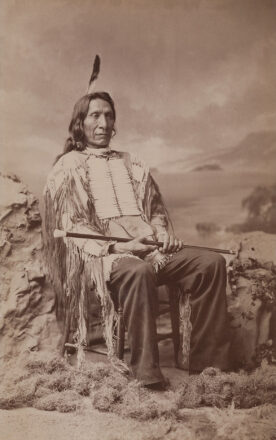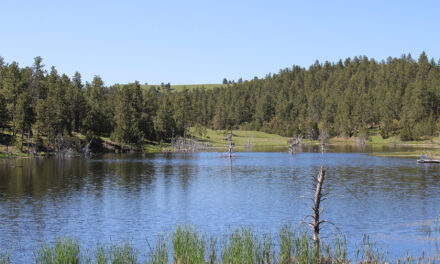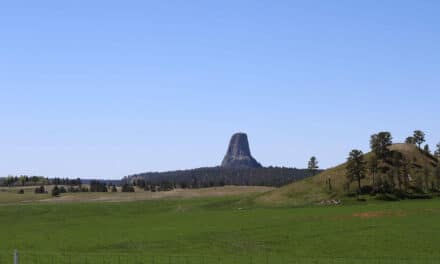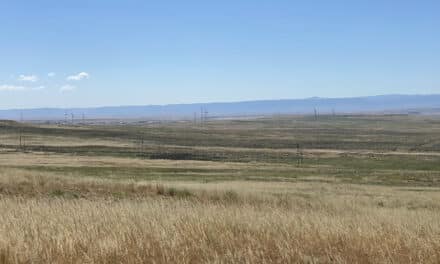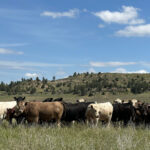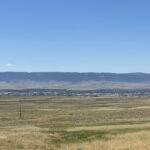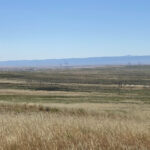Purpose and Use
Introduction
The Bozeman Trail emerged during the time of broad mid-nineteeth century westward expansion. In essence, the Bozeman Trail was emblematic of the broader American push westward during the 19th century. It represented both the opportunities sought by many and the challenges and conflicts that arose from such rapid expansion into previously untouched territories.
The Bozeman Trail was an overland route that connected the gold rush territories of Montana to the Oregon Trail in the mid-1860s. The trail was named after John Bozeman, who, along with a companion named John Jacobs, blazed much of the route in 1863. The trail ran through what is now Wyoming, cutting across traditional hunting grounds of various Native American tribes, primarily the Lakota Sioux.
Gold in Montana
In the early 1860s, significant gold discoveries were made in Montana Territory, especially around Bannack, Virginia City, and later Helena. These discoveries led to a rush of miners and settlers into the region, eager to stake their claims and seize upon the economic opportunities. The need for a more direct route from the Oregon Trail to these Montana goldfields became evident. The Bozeman Trail, as blazed by John Bozeman and John Jacobs, promised a more direct route to the Montana goldfields compared to the longer, established routes.
The trail began at the North Platte River (near present-day Douglas, Wyoming) and joined the Oregon Trail. From there, it passed through the Powder River Basin and north to the Yellowstone River, eventually reaching the goldfields in Montana. It effectively shortened the travel distance and time for many seeking their fortunes.
Settlers and Entrepreneurs
Beyond miners, the Bozeman Trail attracted a variety of individuals and groups. Settlers looking to establish new homes and lives in the Montana Territory found the trail useful. Additionally, entrepreneurs recognized the economic potential of the region, not just from gold but also from establishing businesses to cater to the growing population. This included traders, merchants, and those looking to set up services along the trail.
Recognizing the strategic and economic importance of the trail, the U.S. military sought to protect and maintain its accessibility. They established forts along the trail, such as Fort Phil Kearny, Fort C.F. Smith, and Fort Reno, aiming to ensure the safe passage of travelers from potential threats, particularly from Native American tribes who viewed the trail as an intrusion into their territories.
Conflict with Native Americans
The Bozeman Trail’s passage through the traditional territories of several Native American tribes, especially the Lakota Sioux, Northern Cheyenne, and Arapaho, led to significant tensions and conflicts. This backdrop is essential for understanding Red Cloud’s War.
Sacred Territories
The Bozeman Trail cut across the Powder River Country in Wyoming, a region considered vital for the tribes’ way of life. This area was not only rich in resources like game (particularly bison) but also held spiritual significance for the tribes.
Treaty Violations
Prior treaties, like the Fort Laramie Treaty of 1851, had recognized parts of the Powder River Country as Native American territories. The establishment of the Bozeman Trail and the subsequent military presence violated these agreements, escalating tensions.
Initial Skirmishes
As settlers and miners began using the Bozeman Trail, clashes between them and Native Americans grew in frequency. These early conflicts often revolved around issues like stolen livestock, attacks on wagon trains, or retribution for perceived transgressions.
Red Cloud’s War (1866-1868)
In an effort to protect travelers on the Bozeman Trail, the U.S. military decided to establish a series of forts along the route. Fort Phil Kearny, Fort C.F. Smith, and Fort Reno were among the most notable. However, the construction and presence of these forts further infringed on Native territories and escalated tensions.
Red Cloud, an Oglala Lakota chief, emerged as a central figure opposing U.S. encroachments. Recognizing the existential threat posed by the continued flow of settlers and the military’s presence, he rallied various tribes, mainly Lakota Sioux, Northern Cheyenne, and Arapaho, in a unified resistance against U.S. forces.
Notable Engagements
A particularly significant battle during Red Cloud’s War was the Fetterman Fight of 1866. A detachment of 81 soldiers and civilians under the command of Captain William J. Fetterman pursued a small Native American war party near Fort Phil Kearny. They were led into an ambush, and the entire detachment was killed. This battle was a significant victory for Red Cloud and his allies and a shocking defeat for the U.S. military.
In 1867, near Fort Phil Kearny, a group of U.S. soldiers using newly issued breechloading rifles successfully defended a corral of wagon boxes from a much larger force of warriors at the Wagon Box Fight. Despite being outnumbered, the soldiers’ defensive position and the rapid firing rate of their new weapons allowed them to fend off the attackers.
Treaty of Fort Laramie (1868)
Recognizing the costs and challenges of the conflict, the U.S. government entered into treaty negotiations. The resulting Treaty of Fort Laramie in 1868 was a significant victory for Red Cloud and his allies. The U.S. agreed to abandon the forts along the Bozeman Trail and recognized the Powder River Country as Native American territory. This effectively closed the trail to white settlers.
The conclusion of Red Cloud’s War marked one of the few instances where Native American forces secured a significant victory over the U.S. military in the 19th century. However, in subsequent years, as U.S. expansion continued and other gold rushes emerged, the pressures and encroachments on Native territories persisted, leading to further conflicts.
Legacy of the Bozeman Trail
The trail’s prominence was relatively brief. The conflicts with Native American tribes and the subsequent Treaty of Fort Laramie in 1868 led to the official closure of the Bozeman Trail to white settlers. By the time the Northern Pacific Railroad reached Montana in the early 1880s, the trail had been largely abandoned in favor of the more accessible and safer rail transport.
The Bozeman Trail remains a symbol of westward expansion, the clash of cultures, and the struggles and challenges faced by both Native Americans and settlers during that period. Today, parts of the trail can still be traced and are remembered through historical markers and sites. Overall, the Bozeman Trail is an essential chapter in the history of the American West, encapsulating the tensions, ambitions, and changes that defined that era.


